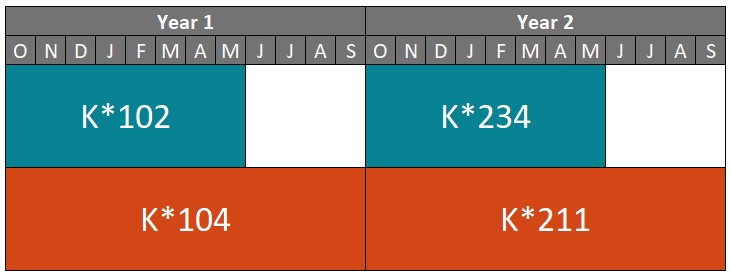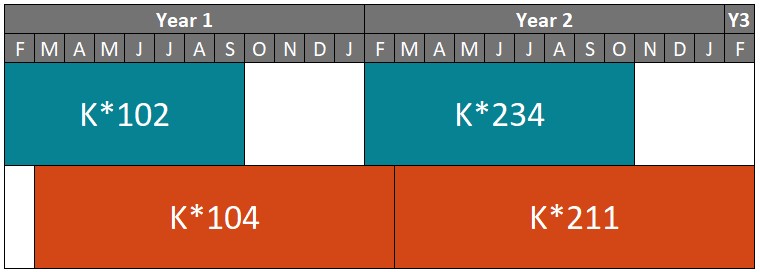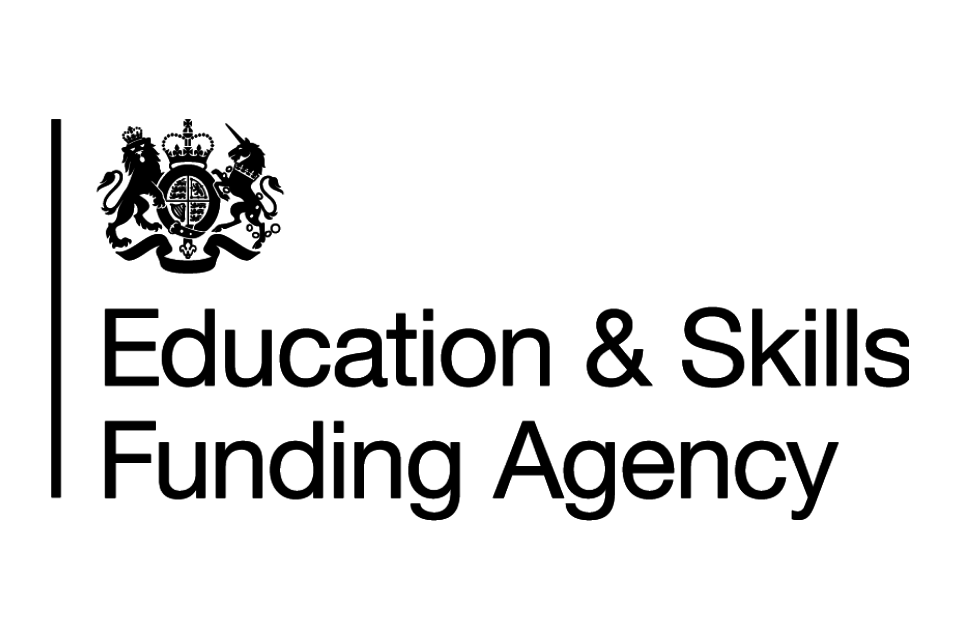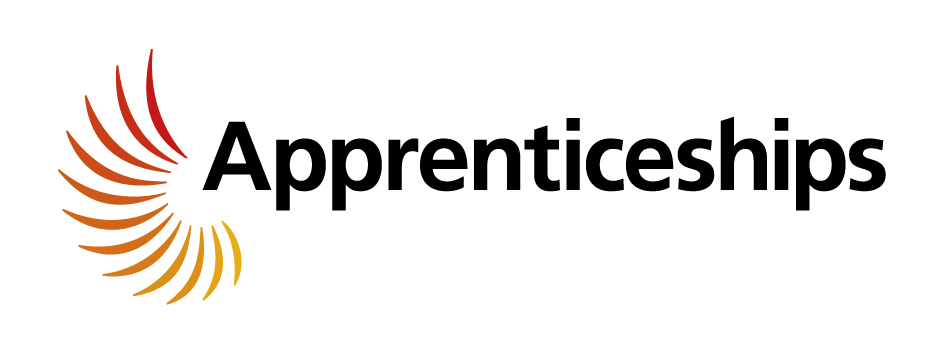You are here
- Home
- Apprenticeships
- Programmes in England
- Nursing Associate Higher Apprenticeship
- Nursing Associate Higher Apprenticeship - Information for employers
Nursing Associate Higher Apprenticeship - Information for employers
There are some specific eligibility criteria and entry requirements that need to be observed before an application for the Nursing Associate Higher Apprenticeship is submitted.
INTRODUCTION
Our Nursing Associate Higher Apprenticeship is delivered in collaboration with healthcare employers to develop apprentices towards achieving registration with the Nursing and Midwifery Council (NMC) as a Nursing Associate.
This webpage sets out some key information for our employer partners supporting apprentices on this programme. This information is correct at the time of publishing and this webpage will be reviewed regularly.
Please contact your Staff Tutor or Apprenticeship Programme Delivery Manager with any queries.
PROGRAMME OVERVIEW
The Nursing Associate Higher Apprenticeship consists of practice learning and theory learning across four modules as set out in the programme schedule, in accordance with the NMC (2018) Standards for pre-registration nursing associate programmes. The clinical practice learning is delivered with supervision within the workplace and on placement with support from the OU.
Across the programme, the requirements include:
- a minimum 460 supernumerary hours in external practice placements (practice hours)
- a minimum 460 hours working with a named practice supervisor in their primary practice setting (practice hours)
- 230 additional hours as protected learning time (e.g. insight visits and spoke placements to obtain experience in all fields of practice) (practice hours)
- time away from practice for off-the-job learning to study module materials (theory hours)
- 690 hours for ‘applying theory to practice’ and ‘protected learning time (theory)’ e.g. theoretical learning in practice such as reading a policy (theory hours)
- additional paid study time is required for apprentices who need to complete English and maths functional skills qualifications. This is a minimum of 50 hours per functional skill depending on the level assessed on entry.
On the OU’s Nursing Associate Higher Apprenticeship programme, 770 hours of practice learning is needed during the first practice learning module (K*104), with a further 770 hours during the second practice learning module (K*211), as shown in the programme schedule.
This means across the whole programme, students will need to complete the following practice learning hours:
| Nursing Associate Higher Apprenticeship | 460 hours total in external placements | + | 690 hours total in primary placement | + | 390 hours total in supervised practice | = | 1540 hours total |
Demonstrated as a balanced split across the two practice modules, K*104 and K*211, this diagram represents how the practice hours would be allocated:
| Module K*104 | 230 hours total in external placements | + | 345 hours total in primary placement | + | 195 hours total in supervised practice | = | 770 hours total | |
| + | ||||||||
| Module K*211 | 230 hours total in external placements | + | 345 hours total in primary placement | + | 195 hours total in supervised practice | = | 770 hours total | |
| = | ||||||||
| Total number of practice hours achieved | = | 1540 hours total | ||||||
It is not a requirement for external practice placements to be spread evenly across K*104 and K*211, as long as 460 hours are evidenced in external practice placements for the whole programme, and 770 hours of practice learning achieved at each module. Should there be an unequal split of external placements, apprentices will need to complete the deficit in hours in supervised practice.
The following diagram provides an illustration of what an uneven split of external placements might look like:
| Module K*104 | 150 hours total in external placements | + | 425 hours total in primary placement | + | 195 hours total in supervised practice | = | 770 hours total | |
| + | ||||||||
| Module K*211 | 310 hours total in external placements | + | 265 hours total in primary placement | + | 195 hours total in supervised practice | = | 770 hours total | |
| = | ||||||||
| Total number of practice hours achieved | = | 1540 hours total | ||||||
Supplementing learning in practice, theory learning is delivered by the OU through online learning, tutorials, written assignments and wider reading. The ESFA funding rules require that this learning is undertaken off-the-job.
PROGRAMME SCHEDULE
|
Stage 1 |
Stage 2 |
Completion |
|
Introducing health and social care |
Healthcare theory for practice |
Foundation Degree in Nursing Associate Practice awarded Registration with the NMC. EPA achieved. Apprenticeship programme completed. |
|
Introduction to healthcare practice |
Developing nursing practice |
| Theory modules | |
| Practice modules | |
| EPA |
The Nursing Associate Higher Apprenticeship has start dates in October and February each year. Comprising of four 60 credit modules, the timelines for the standard Nursing Associate Higher Apprenticeship routes are as follows:
OCTOBER START - STANDARD ROUTE

FEBRUARY START - STANDARD ROUTE

OFF-THE-JOB TRAINING
An apprenticeship is a job with a formal programme of training which meets the requirements of the Apprenticeship Standard (in England), Framework (in Wales). The time that employers must allocate to this training can vary between programmes. The planned training hours will be detailed in the Training Plan. Note that in England and Wales, this time is called 'off-the-job training'. This is time for the apprentice to engage in the learning with the OU during their contracted working hours.
For full guidance, visit: gov.uk/government/publications/apprenticeships-off-the-job-training
This takes place in addition to the 1,540 hours of practice learning which your nursing associate apprentices will undertake on the programme.
PRACTICE LEARNING
The primary work base
Your apprentices’ normal place of work within your organisation will be their primary base for the Nursing Associate Apprenticeship programme.
As your apprentices’ primary practice base, your organisation will need to meet the NMC (2018) Standards for student supervision and assessment. These standards state the quality assurance requirements for practice placement experiences, practice supervisors and practice assessors in each placement setting.
As the primary practice base, your organisation must also have a satisfactory current learning environment audit with either the OU or another higher education institution (HEI). If your organisation does not have a current learning environment audit in place (as required by the NMC, 2018), a member of the OU nursing team will complete this in conjunction with practice colleagues. The learning opportunities available within your organisation need to be mapped to the NMC (2018) Standards of proficiency for nursing associates and the skills within Annexe A and B of these standards. This mapping exercise will assist with scoping the range of practice settings and practice learning opportunities required for the 460 hours of supernumerary practice in alternative external practice placement areas.
Protected practice learning
Protected practice learning time is defined as “time in a health or care setting during which students (apprentices) are learning and are supported to learn. Students (apprentices) must be supervised during protected learning time. The level of supervision required is a matter of professional judgement and will depend on the competence and confidence of the student (apprentice) and the risk associated with the intervention being delivered.” (NMC (2018) Standards for pre-registration nursing associate programmes). You will need to ensure that protected practice learning time is accommodated for in order for your apprentices to have learning time with their practice supervisor or practice assessor, amounting to a minimum 20% of the total programme time.
The NMC (2018) Supporting Information: Protected learning time in practice for nursing associate programmes document provides an overview of protected practice learning time and some examples of how it can be provided in clinical practice settings.
Apprentices will be provided with a list of module activities that can contribute to protected learning time (theory) which should equate to 230 hours over the whole programme. Apprentices are also required to complete and evidence 230 hours of protected learning time (practice) and examples of this in the student handbook.
External practice placements
In addition to practice learning in the primary base, your nursing associate apprentices must undertake a minimum of 460 hours of supernumerary practice in external placement areas. The NMC (2018) Standards for student supervision and assessment define supernumerary as meaning that during these periods of practice learning, apprentices “are not counted as part of the staffing required for safe and effective care in that setting”.
External practice placement experiences must provide the opportunity for apprentices to gain learning opportunities and skills which they are unable to meet within their primary practice base in order that the apprentices meet the NMC (2018) Standards of proficiency for nursing associates by the end of the programme.
Nursing Associate apprentices must gain experience in all fields of nursing practice and across the lifespan within different health and care settings, including both inpatient and community settings. A ‘hub and spoke’ placement model can be used for this generic role, as nursing associate apprentices are required to gain experience of adults, children and young people, maternal care, learning disability, mental health, long term conditions, complex needs, older adult/dementia care, palliative/end of life care.
An example of an external practice placement is a nursing associate apprentice employed in a surgical ward at a hospital, undertaking a practice placement in the paediatric ward of the same hospital or a practice placement outside of the hospital, e.g. a community mental health team. This can also take the form of ‘insight days’, for example, a student may spend a day with a midwife.
Like the primary base, these external practice placement areas must also meet the NMC (2018) Standards for student supervision and assessment with access to practice supervisors and assessors.
Supernumerary external placement experiences will need to be arranged by your organisation in consultation with us, and formal agreements are required prior to learners starting the programme.
If apprentices go to other healthcare organisations for some of their external placements, there may be an expectation that your organisation enters into reciprocal arrangements for clinical placements, have honorary contracts or service level agreements in place, and that apprentices meet their mandatory and statutory training requirements.
The OU will introduce employers to contacts they have with local healthcare providers, however in some areas the OU has no presence, so the employer will have to negotiate with local healthcare providers and confirm an agreement on placement provision.
SUPPORT ON PROGRAMME
There is a shared responsibility for the support of Nursing Associate Higher Apprentices between the OU and your organisation.
Requirements for practice learning areas and supervision
Within the workplace, appropriate supervision will be needed according to the NMC (2018) Standards for student supervision and assessment.
To meet the NMC (2018) Standards framework for nursing and midwifery education, apprentices’ primary base and external placement clinical areas are required to have a current learning environment audit in place. Learning environment audits look at the quality assurance of the clinical setting in terms of learning opportunities, Care Quality Commission (CQC) reports, availability of practice assessors and practice supervisors, compliance with staff appraisals and mandatory training. If your organisation does not have a current learning environment audit in place, a member of the OU Nursing Team will complete this in conjunction with practice colleagues.
It is important that there are enough trained and prepared practice assessors and practice supervisors available to support nursing associate apprentices on clinical placement, including cover for annual leave, sickness, special leave and staff leaving.
Practice supervisors are registered nurses, registered nursing associates or other registered healthcare professionals within the workplace who act as role models supporting and supervising nursing associate apprentices, whilst also providing feedback on their progress and achievement of proficiencies and skills.
Practice assessors are registered nurses or registered nursing associates within the workplace, with appropriate relevant experience, who make and document evidence-based assessments on nursing associate apprentices’ conduct, proficiency and achievement.
A practice assessor cannot simultaneously be the practice supervisor for the same nursing associate apprentice.
Apprentices will need to evidence a minimum 1150 hours of supervised practice over the whole programme to meet NMC requirements. The level of supervision will depend on the confidence and competence of each individual apprentice based on the practice supervisor/assessor assessment.
OPEN UNIVERSITY SUPPORT
In addition to a designated academic and professional lead for healthcare and account management support, the OU will deploy expert staff to support you and your apprentices:
- Practice Tutors/Academic Assessors – Help to integrate learning into the workplace, supporting the delivery of practice-based learning modules across the duration of the programme. Apprentices, practice assessors and practice supervisors are supported using online approaches and three professional practice meetings and progress review meetings four times per year with three-way discussion.
- Academic Tutor/Module Tutor – Facilitates learning within the theory modules at each stage of the qualification through personalised tuition, delivery of online tutorials, marking of assignments and detailed feedback.
- Nursing Staff Tutor – Supports employers to deliver the nursing associate apprenticeship to meet both organisational needs and the quality assurance requirements set down by the NMC with respect to practice learning requirements and learning environment audits.
- Apprenticeship Programme Delivery Manager (APDM) – Supports employers to deliver their apprenticeship programmes fulfilling organisational needs. Your allocated APDM provides regular management data on apprentices’ progress.
In addition, The Open University provides the following support for apprentices:
- Access to a dedicated Apprenticeships Enrolment and Support Team.
- Disability and accessibility support.
- Access to an online library, containing a world-class collection of high-quality academic and professional resources.
ASSESSMENT
Theory assessment
Your apprentices’ theory work will be assessed by the OU through a combination of tutor-marked assignments (TMAs), interactive computer-marked assignments (iCMAs) and End-of-module assessments (EMAs).
Practice-based assessment
In practice, the Nursing Associate Higher Apprenticeship Practice Assessment Document (PAD) records your apprentices’ achievement of the NMC (2018) Standards of proficiency for nursing associates both within their primary practice base and in external practice placement areas. The practice assessor in the practice setting will sign off apprentices’ achievements.
Regular meetings will take place between the apprentice, their practice assessor and their OU practice tutor, who also fulfils the role of academic assessor.
End-point assessment (EPA)
When your apprentices’ training is complete, a final independent assessment takes place, called an end-point assessment (EPA). This assessment is the opportunity for your apprentices to demonstrate that they are genuinely competent in their occupation at the end of their training.
For apprentices joining the programme from October 2020 onwards (subject to final confirmation), this assessment will be integrated in the final stages of the programme.
Details of what the Nursing Associate Higher Apprenticeship end-point assessment will entail is set out in the nursing associate assessment plan on the Institute for Apprenticeships & Technical Education website. This will include an assessment of apprentices’ skills, knowledge, values and behaviours.
The OU will contract with the EPA organisation on behalf of your organisation.
BACK TO NURSING ASSOCIATE HIGHER APPRENTICESHIP PROGRAMME
Last update: 23 February 2024
 |
 |
Programme Summary
Location: England
Duration
- Standard route: 2-3 years depending on start date
Qualifications achieved at the end of the programme
- Foundation Degree in Nursing Associate Practice
- Nursing Associate Higher Apprenticeship awarded by the Institute of Apprenticeships and Technical Education (IfATE)
Level and standard
- Apprenticeship Level 5
- Apprenticeship standard
Specific entry requirements
Recognition of prior learning (RPL)
End-point assessment (EPA)
- Integrated
Additional information
Contact usFurther information
 |
For a more detailed look at our Nursing Associate Higher Apprenticeship, download our brochure. |
Find out how we can help your organisation
Please contact us to speak to one of our business team advisors.
Not on our mailing list?
Sign up to receive regular emails that are full of advice and resources to support staff development in your organisation.